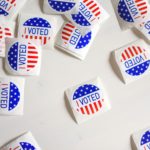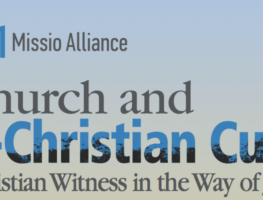 To missional church white people, interested in racial reconciliation, I recommend you read Martin and Malcolm: A Dream or a Nightmare by James Cone. In it, Cone outlines the history of the black struggle for equality, justice and freedom from oppression in the United States. He explores in great depth two profoundly different figures in black American leadership: Martin Luther King Jr., and Malcolm X. They provide the two main historical options offered within the black community to overcome racist oppression in America. If a white man like me wishes to enter into this struggle, on the terms already dictated from within the struggle itself, this book offers immense perspective.
To missional church white people, interested in racial reconciliation, I recommend you read Martin and Malcolm: A Dream or a Nightmare by James Cone. In it, Cone outlines the history of the black struggle for equality, justice and freedom from oppression in the United States. He explores in great depth two profoundly different figures in black American leadership: Martin Luther King Jr., and Malcolm X. They provide the two main historical options offered within the black community to overcome racist oppression in America. If a white man like me wishes to enter into this struggle, on the terms already dictated from within the struggle itself, this book offers immense perspective.
Martin Luther King is option one. MLK was a non-violent “integrationist” from the south. He believed the wider white culture could be redeemed. He believed it was possible for the African American to enter into the mainstream American economy/society as full participants. Once white people, especially in the church, saw the horrors of injustice in their land, MLK believed they would live up to their own ideals, that “all men(sic) are created equal.” Martin, according to Cone, was a theological liberal. Although raised in the Southern black church, he was educated in the north. He believed in progress of liberal society. Yet he believed in non-violence as the Christian way to engage the false powers. He was relentless in his advocacy of non-violence as grounded in Jesus Christ (as well as Gandhi/Tolkien etc.). By peaceful protesting, revealing the horrors and lies, by peacefully living and resisting , God would bring justice for the black community to America.
Malcolm X is option two. He was a black nationalist who believed violence was necessary to stand up to the oppression of the white man’s culture. For Malcolm, the first task was for black people to reclaim their identity. If they did not recover their dignity and self-identity- so beaten down by white society- any attempt by black people to integrate into white society would absorb them into the powers of white men. In essence the black nation would be re-absorbed into another form of slavery. His experience was from the black ghetto’s of the north where white people talked a good game but in the end just developed a different tactic for enslaving back people: the ghetto. Most of Malcolm’s education came from his apprenticeship under the Muslim Elijah Muhammad.
Martin was positive on America. “I have a dream” was his favorite mantra. Malcolm was sour on America believing that if black people were to ever be free they must first separate. America, for Malcolm, was a “nightmare.”
Cone’s book does more than narrate the historical options. He is helpful in exposing the weaknesses of each theologian and how they changed, Martin becoming much more realistic in his views on American society, Malcolm seeing the weaknesses of a singular identity politics. Nonetheless, both streams are still alive and well today.
In regards to MLK, I resonate with Malcolm’s criticism of MLK’s too optimistic views of America. There’s a dangerous naiveté about MLK’s belief in America. I believe this criticism applies to the American church in general (evangelicals and protestant mainliners). It too easily believes in America and its systems (evangelical right and the protestant mainline left) which leaves it vulnerable to assimilation to the powers that run deep at work within the systems. Cornel West adequately argues for a black communal resistance to some of these economic forces which have further enslaved his people into a corrupt economy in the name of justice and equality. On the other hand , MLK’s commitment to nonviolence, listening, dialogue brought powerful change as God used this movement in the early years of the civil rights movement. I see these MLK tactics as models for the church’s work to this day.
In regard to Malcolm, I resonate with MLK’s criticism of Malcolm’s rabid identity politics seeking to win battles through inciting militant violent acts against the powers. MLK was right. This would never work. It would merely inflame and create a stronger “white power” movement. Instead of exposing the lies, it would further them. But Malcolm is right to describe theneed for one’s own integrity as a commiunity, understanding one’s own history, so as to be able to enter into relation with the engulfing systems of white Euro capitalism.
Cone’s book describes these two logics in their history: integrationist and identity politics. They remain our default approach to racial relations in one form or another even in Christian circles. Check out the blogs. Check out the books on this subject. It seems we are stuck bouncing back and forth?
Is There a Space Between MLK and Malcolm?
After reading Cone, I’m left asking, can the church of Jesus Christ (which played a periphery role in both MLK and Malcolm’s strategies for different reasons) offer a space of reconciliation between MLK and Malcolm, a place where MLK’s non-violence meets Malcolm’s preservation of identity. Can there be such a space opened where we come together mutually submitting to the Lordship of Christ and under that power dynamic, be present to one another nonviolently hearing each other’s stories, carefully discerning what God is doing locally in this space and time to reconcile, heal, work together and renew? This space – between MLK and Malcolm – must always be an intensely local engagement contextually driven, on the issues that plague our village, our city, our hospitals, our police forces, our courts, our housing, our education?
To me this is the church entering God’s mission in a way that brings MLK and Malcolm into this one place.
Of course, there is a group led by a black theologian who has been doing this for years, on the ground, locally. His name is John Perkins. The movement is CCDA. The missional church, I suggest, would do well to stop many of its conferences, and just attend to what CCDA is learning and doing on the ground. To me CCDA is opening up that unique and incredible space of the Kingdom breaking in that lies between MLK and Malcolm?
Now I’m saying all this as a white guy reflecting on what I’ve learned. This is not the theological resolution James Cone puts forth in the book. For those who know Cone’s work, what have I missed? What does everybody else think? What am I missing on this extremely short summary of Cone’s book Martin and Malcolm?






Missio Alliance Comment Policy
The Missio Alliance Writing Collectives exist as a ministry of writing to resource theological practitioners for mission. From our Leading Voices to our regular Writing Team and those invited to publish with us as Community Voices, we are creating a space for thoughtful engagement of critical issues and questions facing the North American Church in God’s mission. This sort of thoughtful engagement is something that we seek to engender not only in our publishing, but in conversations that unfold as a result in the comment section of our articles.
Unfortunately, because of the relational distance introduced by online communication, “thoughtful engagement” and “comment sections” seldom go hand in hand. At the same time, censorship of comments by those who disagree with points made by authors, whose anger or limited perspective taints their words, or who simply feel the need to express their own opinion on a topic without any meaningful engagement with the article or comment in question can mask an important window into the true state of Christian discourse. As such, Missio Alliance sets forth the following suggestions for those who wish to engage in conversation around our writing:
1. Seek to understand the author’s intent.
If you disagree with something the an author said, consider framing your response as, “I hear you as saying _________. Am I understanding you correctly? If so, here’s why I disagree. _____________.
2. Seek to make your own voice heard.
We deeply desire and value the voice and perspective of our readers. However you may react to an article we publish or a fellow commenter, we encourage you to set forth that reaction is the most constructive way possible. Use your voice and perspective to move conversation forward rather than shut it down.
3. Share your story.
One of our favorite tenants is that “an enemy is someone whose story we haven’t heard.” Very often disagreements and rants are the result of people talking past rather than to one another. Everyone’s perspective is intimately bound up with their own stories – their contexts and experiences. We encourage you to couch your comments in whatever aspect of your own story might help others understand where you are coming from.
In view of those suggestions for shaping conversation on our site and in an effort to curate a hospitable space of open conversation, Missio Alliance may delete comments and/or ban users who show no regard for constructive engagement, especially those whose comments are easily construed as trolling, threatening, or abusive.